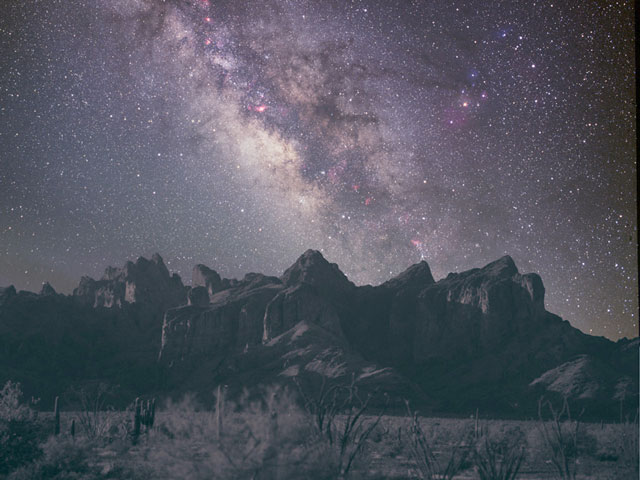
|
Credit & Copyright: Richard Payne (Arizona Astrophotography)
Explanation:
If sometimes it appears that the entire
Milky Way Galaxy
is raining down on your head, do not despair.
It happens twice a day.
As the Sun rises in the East,
wonders of the night sky
become less bright than the
sunlight scattered by our own
Earth's atmosphere, and so fade from view.
They will only rotate
back into view when the Earth again eclipses our bright Sun at dusk.
This battle between heaven and Earth was
captured dramatically in a digitally enhanced double-exposure over the
Kofa
Mountains in
Arizona,
USA in 2003 May.
Dark dust,
millions of stars, and bright
glowing red gas highlight the
plane of our
Milky Way Galaxy,
which lies on average thousands of
light years behind
Earth's mountains.
|
January February March April May June July August September October November December |
| ||||||||||||||||||||||||||||||||||||||||||||||||
NASA Web Site Statements, Warnings, and Disclaimers
NASA Official: Jay Norris. Specific rights apply.
A service of: LHEA at NASA / GSFC
& Michigan Tech. U.
Based on Astronomy Picture
Of the Day
Publications with keywords: Milky Way
Publications with words: Milky Way
See also:
- APOD: 2025 July 2 Á Milky Way Through Otago Spires
- APOD: 2025 May 20 Á Milky Way over Maunakea
- APOD: 2025 May 13 Á Gaia Reconstructs a Top View of our Galaxy
- APOD: 2025 May 12 Á Gaia Reconstructs a Side View of our Galaxy
- Galaxies in Space
- APOD: 2025 February 9 Á Milky Way over the Australian Pinnacles
- APOD: 2024 November 24 Á Journey to the Center of the Galaxy
